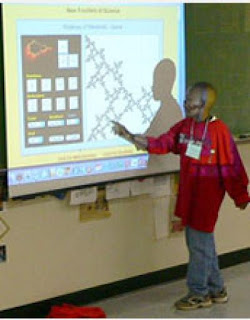Latest results from Math and Science Partnership program show gains for Hispanic and African-American students.
The latest results from the National Science Foundation's (NSF) Math and Science Partnership (MSP) program show not only improved proficiency among all elementary and middle school students, but also a closing of the achievement gaps between both African-American and Hispanic students and white students in elementary school math, and between African-American and white students in elementary and middle-school science.
Since 2002, the MSP program has supported institutions of higher education and K-12 school systems in partnering higher education faculty from science, technology, engineering and math (STEM) disciplines with K-12 teachers. Through the program, STEM faculty provide professional development and mentoring to math and science teachers to deepen their content knowledge in their field of expertise--all with the goal of better preparing students in these subjects.
Similar analyses were conducted for MSP middle schools. Math scores were drawn from 151 schools within MSP projects focused on math improvements and representing about 95,000 students while science scores were drawn from 51 schools within MSP projects focused on science improvements and representing about 9,500 students. While both math and science scores went up in all subgroups, results were the most pronounced among African-American science students; the percentage of students performing at or above proficient rose from 15.9 percent to 23.5 percent over the period, and this closed the achievement gap with white students.
"I'm happy to see that schools' involvement in MSP projects is continuing to have a positive impact on student proficiency results," says NSF program director Dan Maki. "We're particularly excited about the progress being made among Hispanic and African-American students, as closing achievement gaps--while improving achievement for all students--has been a goal of the MSP program since its inception. We continue to monitor data for participating high schools, but we aren't seeing trends yet."
Currently, MSP projects are actively engaged in determining which strategies most strongly correlate to improved student performance. For example, the Milwaukee Mathematics Partnership, led by the University of Wisconsin-Milwaukee, has a major objective of developing district- and school-based teacher leaders and distributing their expertise across Milwaukee's schools. The project has studied how often the teacher leaders effectively spend time with other teachers and strongly connect with networks of teachers, and found that schools in which teacher leaders play important roles demonstrate stronger student achievement results in mathematics. ###
Contact: Maria C. Zacharias mzachari@nsf.gov 703-292-8070 National Science Foundation














No comments:
Post a Comment